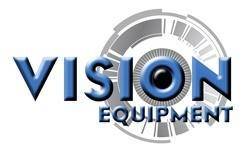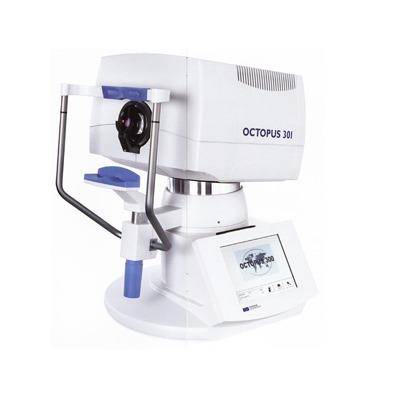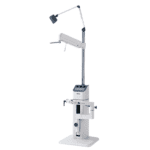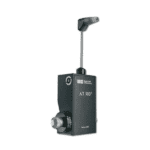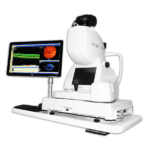Description
Financing Available
Octopus 301 Perimeter
Designed around an ingenious central 30° direct projection system combined with other unique and patented construction elements, the Octopus 301 is ready to support future developments and sets the trend in perimetry for the next decade. Made for routine screening and threshold examinations, the Octopus 301 is the ideal fit for every office environment. With an attractive price tag, the Octopus 301 also meets with a tight budget. However, in case of a more demanding application, the standard Octopus 301 can be upgraded at any time with all the options and features of the Octopus 311.
Features Free access from all sides
The examination unit can be rotated in any direction to permit operation from all sides depending on the floor plan. This allows installation and use in extremely tight spaces. The same principle of rotation makes it technically possible to follow pupil movements and correct fixation loss automatically (see Automatic Eye Tracking). Testing in ambient light conditions An exclusive feature of the Octopus 300 Series is a direct projection system. All its optical elements, the background, the stimuli, the fixation target and the camera are lined up through the same optical path. No false light from outside can disturb the examination because there is no bowl or cupola. Therefore, the OCTOPUS 300 perimeters can be used in ambient light conditions and still provide reliable results.
Automatic eye tracking
Good eye fixation may be the most important element in support of the reliability of data. The Octopus 300 Series has a unique rotating optical head that allows the unit to follow the patient’s pupil automatically. This means that the eye is kept centered and fixation is always maintained.
Examination programs
The OCTOPUS perimeters have diagnostic examination programs using different test grids in relation to the topography of the retina and underlying pathologies. Also, the examinations are run in stages prioritizing the most crucial field areas by testing the critical points first. Fast test strategies Longer examination times may result in errors caused by patient and retinal fatigue. Therefore, it is important to have a choice to employ in particular cases a fast test strategy with a significant reduction in time.
The Dynamic strategy adapts the step size automatically to the depth of a defect. The time saving here is approximately 50%. The TOP Strategy (Tendency Oriented Perimetry) reduces testing time to just over 2 minutes for an examination using the program G1 test grid with 59 locations.
